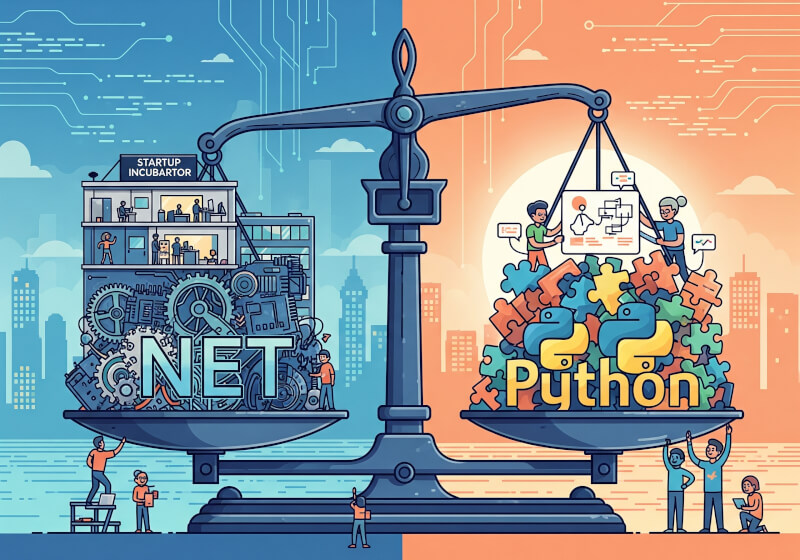.NET vs. Open Source: The Real Cost of Ownership for Your Startup

When a startup is choosing its tech stack, the question of cost is a major one. For a long time, the thinking went like this: .NET is expensive, and open-source languages like Python and JavaScript are free. But in today's software landscape, that idea is outdated and misleading.
To make an informed decision, you need to look beyond a simple price tag and consider the Total Cost of Ownership (TCO). TCO includes all the expenses associated with a software project throughout its lifecycle, from initial development to long-term maintenance. Here's how the different factors break down.
1. Licensing and Tooling
This is where the biggest myth about .NET's cost comes from. In the past, developers relied on expensive licenses for the Windows operating system, database software, and the full version of Visual Studio.
- .NET is now open-source and free. The core platform is open-source and free for commercial use. This means you don't pay anything to use the languages (C#, F#), the compilers, or the runtime.
- Visual Studio Code (VS Code) is the great equalizer. While the full-featured Visual Studio IDE still has a paid enterprise version, VS Code is a free, lightweight, and cross-platform editor that is a favorite among developers for all languages. The fact that .NET development can be done entirely in VS Code on macOS, Windows, or Linux puts it on a level playing field with Python and JavaScript.
Bottom Line: The up-front cost of the tech stack itself is virtually zero for all three options. Any costs for advanced tools or services are optional.
2. Developer Salaries and Talent
The largest expense for any software startup is people. The cost of a developer is a function of supply and demand, and salaries for .NET, Python, and JavaScript developers are often quite comparable.
- Widespread Demand: All three languages are in high demand in the job market, which keeps salaries competitive. While JavaScript (especially with frameworks like Node.js and React) and Python have a reputation for having larger talent pools for web development, there is no shortage of skilled .NET developers, particularly in the enterprise world.
- Specialized Expertise: The specific salary you pay will depend on your needs. For a data science or machine learning startup, a Python developer may be in higher demand and command a higher salary. For a high-performance web API or a desktop application, a .NET developer might be a better fit, and their salary will reflect that specialization.
Bottom Line: Developer salaries are a significant TCO factor, but the cost difference between the three languages is often negligible and depends more on the specific role and location.
3. Long-Term Costs: Maintenance and Performance
The real TCO isn't about how much you spend on Day 1, but how much you spend over the next several years on bug fixes, new features, and infrastructure.
- Performance and Infrastructure: .NET is known for its high performance. A well-optimized .NET application may require fewer servers or less powerful hardware to handle the same amount of traffic as an application built with a less performant language. Over time, these savings in hosting and infrastructure can add up significantly.
- Maintainability: .NET's structured, statically-typed nature (particularly with C#) can reduce the number of bugs and make the code easier to maintain and refactor over a long period. This can lead to a lower TCO in the long run by reducing the time your team spends on maintenance. Python and JavaScript's flexibility can lead to faster initial development, but can also introduce complexity that makes maintenance more expensive later on.
Bottom Line: Your choice of language can have a major impact on your long-term hosting and maintenance costs. The initial cost savings of an open-source language may be offset by higher operational costs as you scale.
Conclusion
For a startup today, the decision between .NET, Python, and JavaScript is no longer a simple matter of cost. The tooling and licensing fees are no longer a major differentiator, and developer salaries are relatively comparable across the board. The real TCO of your project will be determined by your team's expertise, the specific needs of your application, and the long-term trade-offs between development speed and long-term maintainability.
References:
You May Also Like
From C# Developer to ML Expert: Building a House Price Prediction System with ML.NET

Brad Jolicoeur - 10/13/2025
The Architect’s Guide to .NET Templates: Building Scalable Golden Paths

